Reports, Studies, Research Papers, and links to some Tickers even

Images of the James Webb Telescope are in the public domain.
The images of the James Webb Space Telescope are all in the public domain. The first images were released on July 12, 2022. Images are now available continuously on the Webb Telescope Image Gallery. Indeed, the Webb telescope site makes us think about the nature of reports generally. While the site does feature compendiums of information, such as its section on Early Highlights, the site is a moveable feast. I’ve always tended to think of a report as a kind of snapshot, and most of the reports on this site are just that, snapshots of important events or trends. However, as the internet has replaced the written word as the primary resource for knowledge, the snapshot is no longer the primary source of information. Rather, we have scrolls of information, news tickers or crawlers that are constantly updating us on the news as it occurs. This site does not have tickers or crawlers, as I typically visit it once a day and only update one or two pieces of information daily. However, many of the sites that I link to, including this one, are updated continuously. Enjoy!
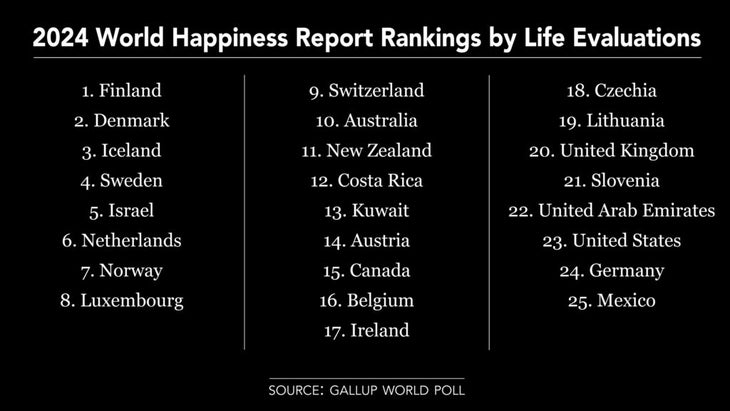
World Happiness Report, 2024
It’s always fun to post multiple copies of reports. In this case, the 2024 and the 2021 (below) World Happiness Reports. You can see that things change over time. In this case, it appears that the United States is becoming less happy. If you disaggregate the data, it seems that young people in the United States in particular are becoming less happy. The United States ranked 19th in 2021 and fell to 23rd in 2024, falling out of the top 20 for the first time (and down from #15 a year ago). Self-reported happiness fell for all age groups, but especially for young people. Persons in the U.S. 60 and older rank #10 in the World, those 30 and under rank #62 in the World. Sad. Click HERE to see all of the World Happiness reports, beginning in 2012.

The World Happiness Report, 2021
A group of independent experts writes the World Happiness Report using data provided by the Gallup World Poll and Lloyd’s Register Foundation. The top ranked nation, as seen in the figure to the left is Finland. The United States ranked 19th in 2021. You can download a PDF of the 212-page report HERE. Happiness is defined as “subjective well-being” and relies on “life evaluations, positive emotions, and negative emotions.”
Typically, 1,000 responses are collected annually for each country. When a person says they are happy, a country’s rating goes up; when a person says they are sad; a country’s rating goes down. See Technical Box 1 on page 16 for a glimpse at the ratings. The ranking is a three-year average, 2018-2120. The lowest rated country is Afghanistan, at #149. Hopefully things will turn around there. For a large democratic country, India is a sad place at #139. China is #84.

“Hiroshima” by John Hersey.
Read John Hersey’s book-length article from the August 23, 1946, New Yorker, for free.
In August 1946, for the first time in its history, the New Yorker magazine devoted an entire issue to one article, John Hersey’s epic reporting on the dropping of the atomic bomb on Hiroshima, Japan. Later published by Random House as a book, the best-seller “Hiroshima,” has never gone out of print. In 1999, a panel of the New York University School of Journalism judged Hersey’s article the most outstanding piece of journalism of the 20th Century. Hersey died in 1993 at the age of 78.
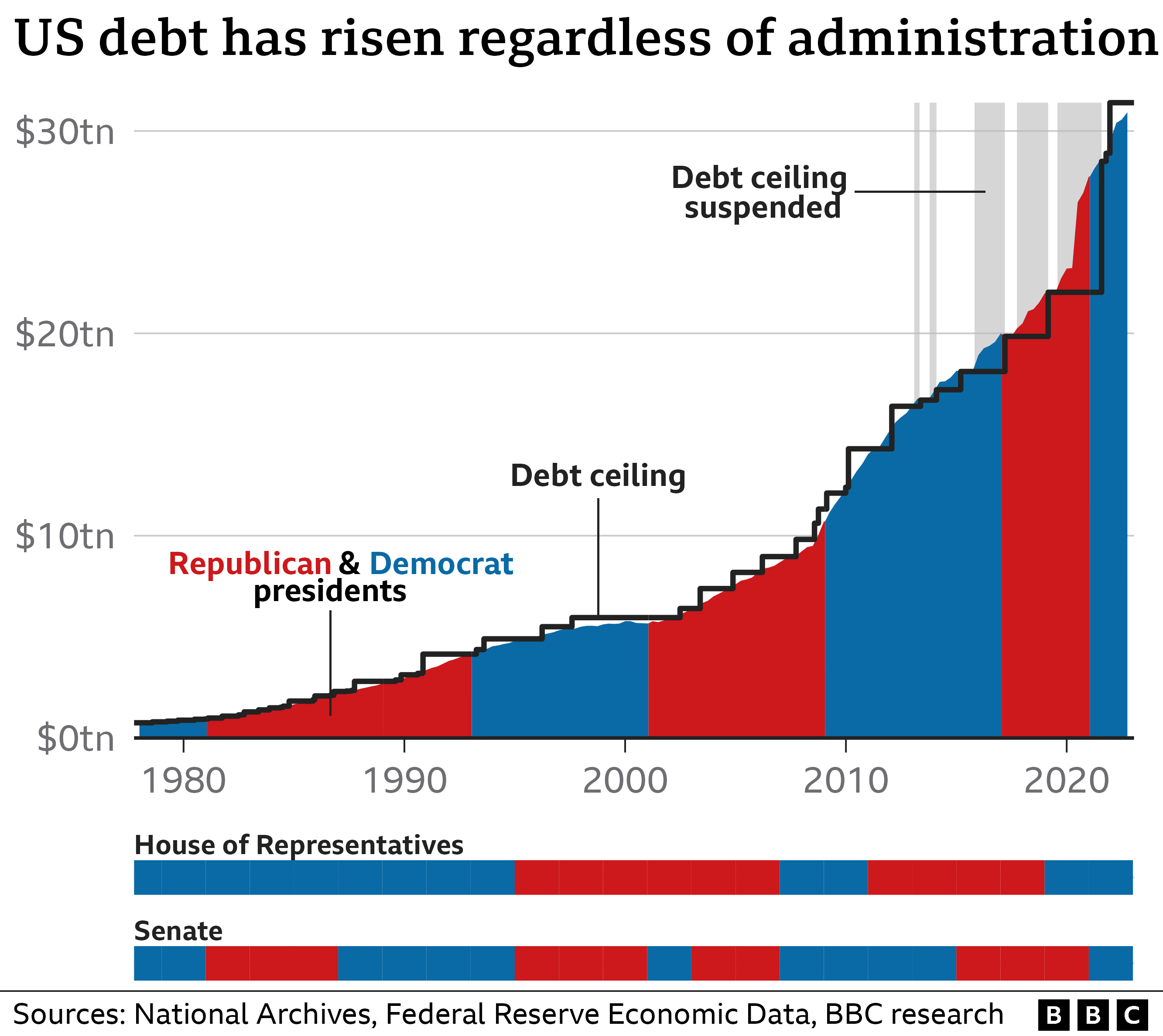
With two days to spare, the U.S. Debt Ceiling Raised through January 1, 2025. (I said they would.)
What is the U.S. Debt Ceiling?
The U.S. debt ceiling or debt limit is the self-imposed borrowing limit that the U.S. government is authorized to borrow to meet its legal obligations, including interest on bonds (typically the first payments made), Social Security and Medicare, salaries for the military, and other payments for programs of the national government. The debt limit is explained at the U.S. Department of Treasury website.
As shown on the graph to the left, the debt ceiling has been raised by both Democratic and Republican administrations. While there is a great deal of posturing at present, my guess is that the debt limit will be raised again prior to a default. (JUNE 3, 2023 NEWS FLASH: And they did raise it, Biden signed a bill raising the debt ceiling with two whole days to spare.) What is especially disturbing to me is the change in the slope of the line. Not only is the amount of the debt increasing, but the rate of change is increasing as well. The budget as a percent of GDP was 31% in 2001, at the beginning of George W. Bush’s term. As you can see, the slope of the debt’s increase takes off as the Bush tax cuts take effect. The ill-considered tax cuts at the beginning of the Obama administration compounded the problem, as did the Trump tax cuts. Stimulus spending during the pandemic caused the debt to further soar. A good explanation of the drivers of the national debt is provided by the Peterson Foundation.
According to the Congressional Budget Office, spending for 2023 is projected to be 6.2 trillion dollars. One would like to say what the budget for 2023 is, but the U.S. government no longer has a budget because the Congress can no longer pass one. This sounds preposterous, but how many of us really have budgets in our personal lives? Don’t we usually try to spend about what we make and borrow a little if we come up short? That’s pretty much what the government does. I will attempt to explain the “process” here in the future.
Reasonable people can disagree over the role of debt in governance. The first document on public debt was issued in 1790 by Secretary of the Treasury, Alexander Hamilton (see below). However, I have followed discussions of the U.S. national debt my entire adult life and NO ONE contemplated a national debt exceeding 30 trillion dollars by the year 2023. This was never contemplated in any worst-case scenario. You read it here.
The debt ceiling was established in 1939 when Congress established a total aggregate ceiling on all accumulated debt instruments. This became known as the debt ceiling and has been subsequently established by the Public Debt Acts passed in 1939, 1941 and as subsequently amended. So, basically, the debt ceiling is simply the most recent law passed by Congress saying this maximum debt the U.S. can have. What now happens is that the U.S. government spends $4 for every $3 it takes in. If it does not increase the debt ceiling, the U.S. Treasury Department will have to allocate very carefully which 25% of the people who are due money don’t get it.
On May 27, 2023 a debt ceiling deal was struck by Speaker McCarthy and President Biden, according to the New York Times. Congress approved this as there is something to dislike for everyone.
I urged readers of YRIH to your Congressman to try to get action on the debt ceiling, as it would have been a mess had it not been extended. I pointed out that mine is Congressman Rob Whitman, Congressman.Wittman@mail.house.gov. It’s necessary for you to contact your own member of Congress, unless you do it my snail mail. Unless you write a letter, it’s difficult to contact a member of Congress who isn’t yours. When you go online, you’ll see why.
To find out who your house member is, go to the following link and enter your Zip Code: https://www.house.gov/representa…/find-your-representative

First Report on The Public Credit
Officially titled “Report Relative to the Provision for the Support of Public Credit,” this document was
released by Treasury Secretary Alexander Hamilton on January 9, 1790. Wikipedia has an excellent summary of the significance of this report. Public borrowing has since become, quite literally, the coin of the realm. For an up do the minute snapshot of the U.S. public debt, one can visit the U.S. National Debt Clock. The Peter G. Peterson Foundation has long warned about the risks of an excessive national debt, with no success. The national debt stands at over 30 trillion dollars, excessive by any standard and it will be a plague on our children and grandchildren.
There are many causes of our enormous national debt but much of the blame must be placed squarely on President Ronald Reagan. Prior to Reagan, the national debt was always under one trillion dollars and consumed only 31% of the GDP. The debt and its percentage of GDP (today 124%) have grown steadily since the advent of the Reagan era tax cuts. A year-by-year review of the national debt is available HERE. The national debt stood at $5.8 trillion dollars and 55% of GDP prior to the passage of the Bush tax cuts in 2001 and 2003. By the end of Bush’s presidency in 2009, the national debt had grown to $11.9 trillion and 82% of GDP. The largest annual percentage increase in the national debt in was between 2019 and 2020 when it increased from 107% of GDP to 129% of GDP on account of Covid-19 and the 2020 recession.
The Congressional Budget Office (CBO) publishes a Long-Term Budget Outlook every year which presents its projections on the national debt, deficits, spending and revenue for the next 30 years if current laws and trends hold. The March 2021 report can be downloaded as CBO 2021 Long-Term Budget Report. That report concludes that the national debt will grow into the foreseeable future. It should be noted that past editions of this report have underestimated the national debt, as seen by the 2011 CBO Long-Term Budget Report.
For whatever reason, there is no serious discussion of what to do about the national debt. The Republican Party is committed to tax cuts regardless of their effect on the debt. The Democratic Party espouses the expansion of social programs. Neither party thinks that the financial viability of the nation is immediately at stake or worthy of compromise. Persons interested in reducing the national debt can learn more at the Peterson Foundation website or at the Committe for a Responsible Federal Budget website.
The national debt is not a problem that is unique to the United States. For comparison, see “The National Debt” A Short History” by Martin Slater, which looks at the national debt in Great Britain. Although only the first chapter of the book is available at the link, that is enough to show the similarity in the two situations. It can’t go on forever. But …
Something sobering: the population of planet earth hit 8 billion.
According to the Revised United Nations Population Report, the world’s population hit 8 billion on November 15, 2022. The United Nations marked this with a special #8BillionStrong website. The site features a world population clock, essays on sustainability, and a collection of 800 digital images of human faces that constantly morph. The website is highly upbeat. Other takes on this milestone, including my own, are not so optimistic. My take is that almost all of the world’s environmental problems are due to overpopulation. When I was a boy, the population of the planet was between 2.5 and 3 billion. So, the human population has about tripled in my lifetime. While we’ve done well enough taking care of the added humans, our welfare has come at the expense of animal species and the heating of the planet, something that I hope is reversable.
The Washington Post wrote: Opinion:The world’s population is 8 billion and rising. That’s probably a good thing. The Post opines “Too often in the past, conventional wisdom about population growth has tended to be pessimistic — even apocalyptic. In 1798, British economist Thomas Malthus forecast that an increasing population would soon outstrip, disastrously, nature’s capacity to feed so many people; in 1968, the title of an influential tract spoke of a “population bomb.” And yet here we are: The world’s population has octupled since Malthus’s day, more than doubled since 1968, and living standards around the world have vastly, though unevenly, improved during that time.” Obviously, the Editorial Board has not been reading its own news sections which have recently reported on the Amazon River drying up and record numbers of species going extinct. Why? Because the 8 billions of us are competing for and winning the battle for the planet’s scarce resources. Nor has it been reading its own reports on climate change, which report… Oh, never mind. In this opinion piece the Post includes a graph that shows the world’s population peaking at 10 billion in 2100 and leveling off. A lower fertility scenario shows the world’s population declining to 7 billion by 2100. The problem with these scenarios is that they ignore past trends in favor of wishful thinking. There are no trend data to support such reductions in the world’s population. The rate of growth may slow, but the base is so large that the numerical increases will be very large. Further, even a population in the range of 7 or 8 billion is hazardous to the existence of most other species on earth. Ask the elephants.
However, U.S. Population Growth has flatlined, according to the U.S. Census.
While the population of planet earth is approaching 8 billion, population in the United States has flattened out. See William Frey’s December 23, 2021 article on U.S. population growth, summarizing new 2021 data from the U.S. Census Bureau. Census Bureau reports show the slowest population growth on record for the United States. See the U.S. and World Population Clocks.
An Essay on the Principle of Population by T. R. Malthus
Read Malthus “An Essay on the Principle of Population” for free on Project Gutenberg.
Read Malthus’ “An Essay on the Principle of Population” for free on Google Books.
Thomas Malthus’ essay on population has long stirred controversy. Malthus hypothesized that populations would outgrow the ability of society’s ability to provide food. “The power of population is indefinitely greater than the power in the earth to produce subsistence for man.” While science has stayed a step ahead of famine, with the population of the planet quickly approaching 8 billion persons one has to wonder if Malthus might finally be right. See the World Population Clock for a glimpse at just how fast the world’s population is growing. Every day over 400,000 people are born, for a net increase of about 220,000 persons. In other words, a new Richmond, Virginia or Verona, Italy is created every day. Every year, the planet grows by about 80 million people, a new Germany or Iran. It adds up. As of today (February 12,2022) the global population is 7.9 billion people. It will likely hit 8 billion by the end of 2022. You read it here. While the rate of growth has slowed in recent years, the population base is so high (twice that of 1970) that even though the rate of increase is lower than 1970’s record increase of 2.07%, the raw number increase is still greater. Not everyone agrees that world population growth will follow the United Nations’ forecast of an increase to 11 billion and then level off. See Kayleigh Bateman’s December 13, 2021 World Economic Forum article, “Are we preparing for world population growth? The experts are divided.”
Not everyone shares my views on population. Jerusalem Demsas in her May 24, 2022 Atlantic article “The People Who Hate People” takes on those concerned about population growth. Demsas cherry picks data in a very time sensitive way. Writing about the availability of resources, Demsas writes “As Gregg Easterbrook noted some years ago in The Atlantic, Ehrlich had written in 1968 that it was a “fantasy” that India would “ever” feed itself. But “by 1974 India was self-sufficient in the production of all cereals.” She does not write that India has suspended its exportation of wheat because of rising prices and limited supplies in 2022. Nor does she note that India has the largest number of its former citizens having emigrated than any other country in the world. By the way, in 2023 India passed China as the most populous country on the planet, according to this April 14, 2023 Washington Post article. As with so many articles on population, this one predicts a flattening of India’s population growth. Perhaps.
The U.S. has always valued immigration, as expressed in Emma Lazarus’ sonnet, “The New Colossus.” That poem (“Give me your tired, your poor, Your huddled masses yearning to breathe free …”) was written in 1883 when the world’s population was about 1.5 billion and the population of the U.S. was 50 million. Immigration remains a fraught issue in the United States. This 2023 article from Time Magazine has 7 common sense proposals on how to fix immigration.
A November 3, 2023 opinion piece by Ross Douthat in the New York Times titled “Two Ways of Looking at the West’s Population Dilemma” posits that the burgeoning populations of the third world pose an opportunity for the declining populations of the developed world. This position ignores the strains that population growth puts on the planet as a whole.

Free Reports on Coronavirus
The New York Times Coverage on Coronavirus
The pandemic has raged for over two years now with over a million deaths in the United States alone. We’re all tired of it. Excellent ongoing coverage can be found at the The New York Times. An excellent tracking service is also provided by The Washington Post. Both sites link to other Covid-related articles. As of April 3, 2023 these sites are still being updated and according to the Post, “More than 1,125,000 people have died from coronavirus in the U.S., and more than 104,081,000 cases have been reported.” The same day, the New York Times reported an average of 255 deaths daily in the U.S.
As of July 22, 2023, the most recent N.Y. Times update was on July 21, 2023 where there were 206 deaths reported for the week of July 9-15.

GAO Report: K12 EDUCATION Student Population Has Significantly Diversified, But Many Schools Remain Divided Along Racial, Ethnic, and Economic Lines
This June 2022 GAO Report states that many U.S. schools remain segregated. The report states “More than a third of students (about 18.5 million) attended a predominantly same-race/ethnicity school—where 75 percent or more of the
student population is of a single race/ethnicity—according to GAO’s analysis of Department of Education data for school year 2020-21. GAO also found that 14 percent of students attended schools where 90 percent or more of the students
were of a single race/ethnicity.” A PDF of the full report can be downloaded HERE. See a 3-minute NPR summary of the report.

Audubon Society Report
Survival by Degrees: 389 Bird Species on the Brink
In October 2019 the National Audubon Society released its classic report “Survival by Degrees: 389 Bird Species on the Brink.” The report estimated that two-thirds of American birds were threatened by extinction due to global warming, which has accelerated since the release of the report. The report includes stunning visuals on the effects of climate change on the habitats of birds, using zip codes for ease of use by readers. Citing the Audubon study, an October 10, 2019 New York Times article by Brad Plumer stated that “….as the planet warms and birds across the country relocate to escape the heat, at least eight states could see their state birds largely or entirely disappear from within their borders during the summer.”
Harvard and the Legacy of Slavery
On April 26, 2022 Harvard University released a report acknowledging the role the University played in slavery and how the University profited from slavery. According to a Washington Post article by Nick Anderson and Susan Svrluga “Harvard leaders and staff enslaved more than 70 people, report finds.”
According to the article, “Harvard University leaders, faculty and staff enslaved more than 70 individuals during the 17th and 18th centuries when slavery was legal in Massachusetts, according to a report chronicling the university’s deep ties to wealth generated from slave labor in the South and Caribbean — and its significant role in the nation’s long history of racial discrimination.” Harvard pledged $100 million dollars from its multi-billion endowment to redress the injustices. Many universities in the United States are dealing with the impact of race on their past, from slavery to George Floyd. Ironically, this is happening at a time when U.S. Supreme Court is thought to be likely to roll back affirmative action programs at Harvard.
 At the University of Richmond, a Naming Principles Commission was designated in response to student concerns about University buildings named in honor of persons who enslaved persons or promoted segregation. On March 22, 2022 the Commission made its final recommendations. A report on the “inclusive history” is currently available in its website. This section includes research on Dr. Robert Ryland and Douglas Southhall Freeman, the winner of two Pulitzer Prizes. Subsequently, their names were taken off of campus buildings. Those wishing to remember Dr. Ryland, can still stroll down Ryland Street in VCU, where the University of Richmond was located before Dr. Ryland supervised the campus move to its current West End location. I have to wonder what effect extensive naming scrutiny will have on future donations to higher education. I expect that some donations are made as a kind of penance for mistakes that people know that they have made in their lives. It will be interesting to see if donors will be willing to subject themselves to the kind of scrutiny that higher education seems eager to administer, especially when the standards in place in the future will likely be different still.
At the University of Richmond, a Naming Principles Commission was designated in response to student concerns about University buildings named in honor of persons who enslaved persons or promoted segregation. On March 22, 2022 the Commission made its final recommendations. A report on the “inclusive history” is currently available in its website. This section includes research on Dr. Robert Ryland and Douglas Southhall Freeman, the winner of two Pulitzer Prizes. Subsequently, their names were taken off of campus buildings. Those wishing to remember Dr. Ryland, can still stroll down Ryland Street in VCU, where the University of Richmond was located before Dr. Ryland supervised the campus move to its current West End location. I have to wonder what effect extensive naming scrutiny will have on future donations to higher education. I expect that some donations are made as a kind of penance for mistakes that people know that they have made in their lives. It will be interesting to see if donors will be willing to subject themselves to the kind of scrutiny that higher education seems eager to administer, especially when the standards in place in the future will likely be different still.
In a November 26, 2021 Washington Post article, writers Nick Anderson and Susan Svrluga reported that “From slavery to Jim Crow to George Floyd: Virginia universities face a long racial reckoning: William and Mary is a case study in challenges of renaming campus landmarks and promoting diversity.”
Some Reports in Honor of March Madness

Student Athlete Name, Image, Likeness
Legislation: Considerations for the 117th
Congress
This July 1, 2021 report of the Congressional Research Service summarizes relevant NCAA rules regarding name, image, likeness compensation for student compensation. It also
provides a summary of relevant litigation that led to the Supreme Court decision (NCAA v. Alston) that paved the way for this form of student athlete compensation. The report also provides summaries of state legislative responses and Congressional legislative proposals.
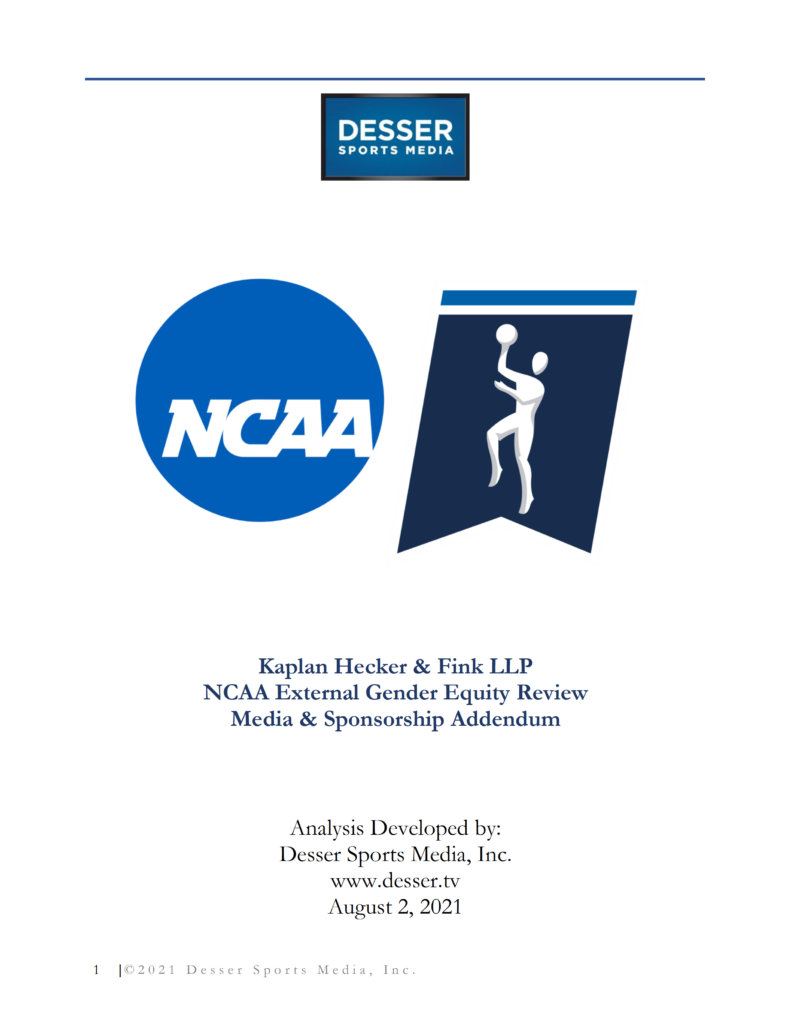
NCAA External Gender Equity Review
The NCAA External Gender Equity Review shows disparities between men’s and women’s athletic programs. This Phase I report covers the Basketball Championships. The Executive Summary states that when comparisons were made “Nearly every time, the women’s tournament fell short. As NCAA President Mark Emmert later acknowledged, ‘When you lay the men’s and women’s [Division I basketball championships side by side, as has been made clear over the past weeks, it is pretty self-evident that we dropped the ball in supporting our women’s athletes, and we can’t do that.”
The NCAA commissioned a gender equity review of its women’s and men’s basketball programs after Oregon women’s basketball player Sedona Prince posted a tictoc video showing a comparison of weight rooms between the men’s and women’s programs at the 2021 NCAA basketball tournament. As you can see, the women had a single barbell rack and the men had a full gym full of equipment. See Amelia Nierenberg’s March 16, 2022 New York Times article “The Video That Changed the N.C.A.A.”
The Democracy Index showed another decline in 2024.
Democracy Index: conflict and polarization
drive a new low for global democracy in 2023.
Read a summary of the 2023 report released in 2024 HERE. According the EIU report, the United States now rates as a “flawed democracy.”


Democracy Index 2021: Not a good year for democracies
The Democracy Index is compiled by the Economist Intelligence Unit of the Economist Group. While the reports of the Economist Group must be accessed by subscription, the Democracy Index is available in its entirety on Wikipedia, which is sourced here.
The 2021 version shows quite a few declines, including the United States, which rates as a “flawed democracy.” Some declines were due to restrictions imposed by the Covid-19 pandemic.
While the 2021 report, released in February 2022, showed declines in democracy for the fifth straight year, a March 2, 2022 Washington Post article by Miguel Angel Lara Otaola was titled “Worried about the state of democracy? Here are some reasons to be optimistic instead.”
Climate Change 2023 Report has now been released
 Concentration of carbon dioxide unmatched for at least 2 million years.
Concentration of carbon dioxide unmatched for at least 2 million years.
Glacial retreat unmatched for at least 2,000+ years
Last decade warmer than any period for ~ 125,000 years
Sea level rise faster than any prior century for 3,000 years
Summer Artic ice coverage smaller than anytime in last 1,000 years
Ocean warming faster than any time since the last ice age
Ocean acidification at highest level of last 26,000 years
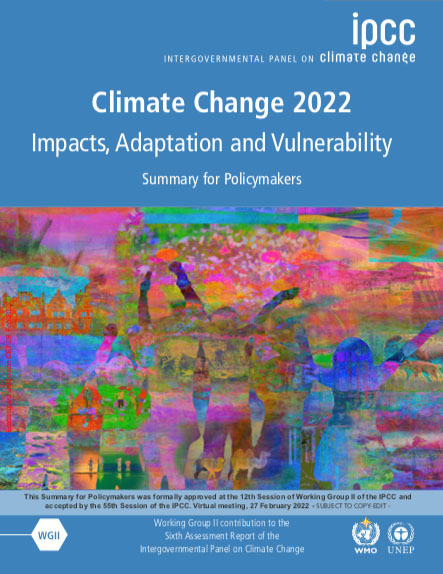
United Nations Climate Report: Climate Change 2022
Read the United Nations report, Climate Change 2022: Impacts, Adaptation and Vulnerability.
This report assesses the impacts of climate change on ecosystems, biodiversity, and human communities. “It also reviews
vulnerabilities and the capacities and limits of the natural world and human societies to adapt to climate change.” The February 28, 2022, New York Times article reviewing the report “Climate Change Is Harming the Planet Faster Than We Can Adapt, U.N. Warns” by Brad Plumer and Raymond Zhong said that “the dangers of climate change are mounting so rapidly that they could soon overwhelm the ability of both nature and humanity to adapt unless greenhouse gas emissions are quickly reduced…”
Download the full 3676-page PDF report HERE.
The United Nations says that it’s now or never to reverse the effects of climate change in its April 2022 climate report. The April report, “Climate Change 2022: Mitigation of Climate Change” focuses on actions that can be taken to reverse global warming. The full mitigation report is available for download United Nations Climate Mitigation Report.

Breaking the Plastic Wave: Top Findings for Preventing Plastic Pollution, Report of the Pew Trusts, July 2020
Plastics pollution are major threats, especially to the world’s oceans. “Plastic waste is entering the ocean at a rate of about 11 million metric tons a year, where it is harming marine life and damaging habitats.”
Download Pew’s Comprehensive Report “Breaking the Plastic Wave” HERE (with thought partners the University of Oxford, the University of Leeds, and others).
Recent Reports of Interest
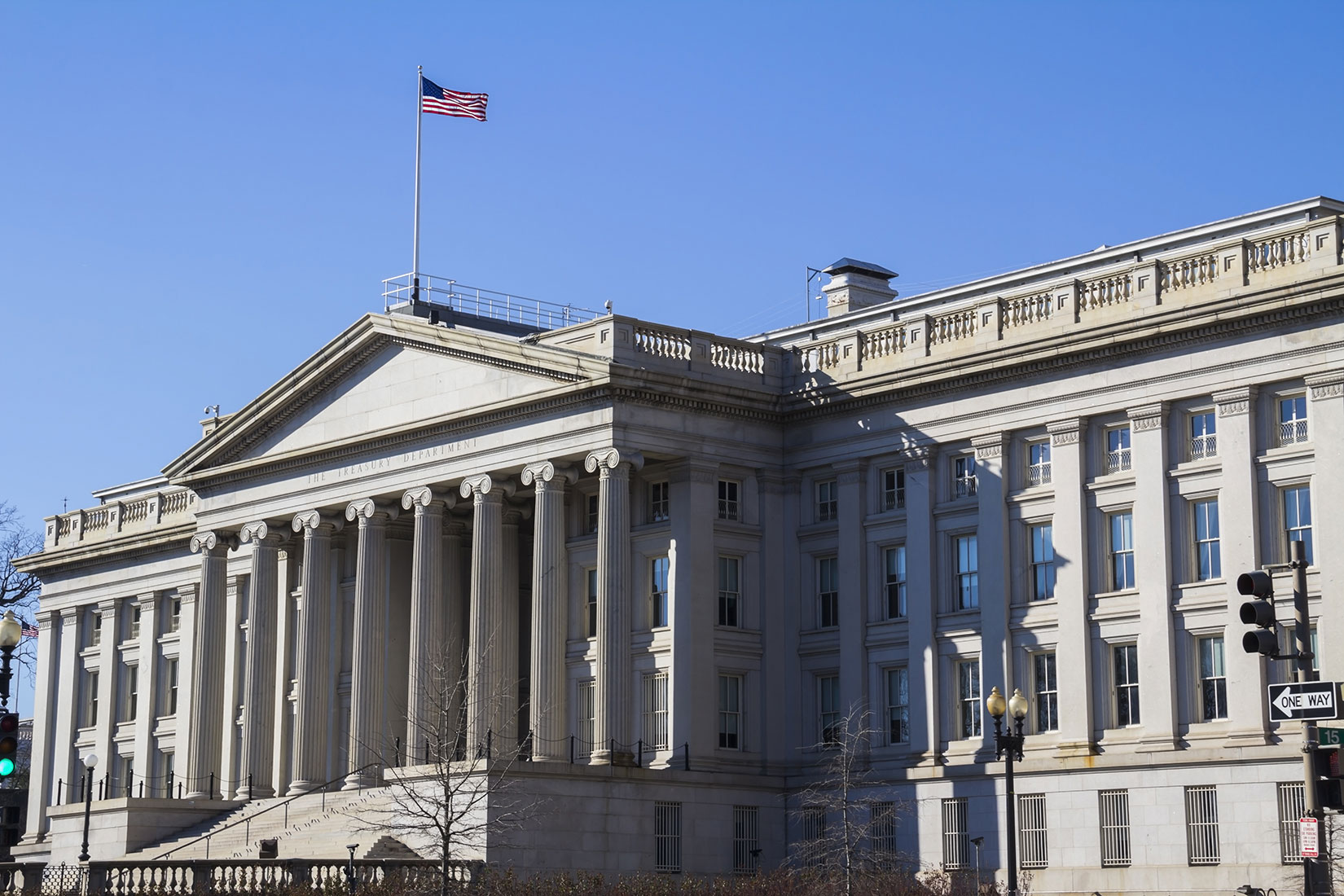
Federal Debt and the Statutory Limit,
July 2021 Report of the Congressional Budget Office (CBO)
This July 2021 Report of the CBO describes what will happen if the statutory debt limit of approximately $22 trillion dollars is not raised before that limit is reached. In short, the government will no longer be able to pay interest on debts that it has incurred, resulting in uncertainty in financial markets which routinely buy U.S. debt thinking that this investment is the most secure in the world. The report is very brief and does not get into dramatic speculation about what might happen. Rather it concludes with the following statement. “CBO estimates that unless the debt limit is increased, the Treasury, after using all available extraordinary measures, will probably be unable to make its usual payments starting sometime in the first quarter of the new fiscal year, most likely in October or November, although an earlier or later date is possible. After that point, the debt limit would cause delays of payments for government activities, a default on the government’s debt obligations, or both.”
For ongoing information on the federal debt and deficit, visit the Peter G. Peterson Foundation. The Peterson Foundation has made a long-term effort to raise awareness concerning the national debt and deficits. Unfortunately, its messages have largely fallen on deaf ears. You can see the national debt chart in real time HERE.

2021 British Commission on Race and Ethnic Disparities: The Report
This controversial report was a British response to the killing of George Floyd. The government of Boris Johnson empaneled the Commission on Race and Ethic Disparities which released its report on March 31, 2021. The report concluded that Britain is not a place that is “deliberately rigged against ethnic minorities.” This and similar conclusions drew criticism, despite the fact that only one of the commissioners was white. Dismay over the report can be seen in headlines from the New York Times “Upbeat Official Report on Race in Britain Draws a Swift Backlash” and the Washington Post “Backlash after U.K. race report seeks to ‘dispel myths’ about racism, tell ‘new story’ about slave trade“.
/https://static.texastribune.org/media/files/ef2c5e69955fac15c39c059fd49ca1c3/Mueller%20Report%20Photo%20REUTERS%20TT.jpg)
2019: The Mueller “Report On The Investigation Into Russian Interference In The 2016 Presidential Election”
Reports of Russian interference dogged the 2016 election between Donald Trump and Hilary Clinton. Special Counsel Robert S. Mueller III was tasked with investigating allegations of conspiracy and coordination between the Russians and the Trump campaign. A summary of the report by Attorney General William Barr provided an exoneration of President Trump. A reading of the report itself might lead to a different conclusion if you read it here.

The Paris Climate Agreement
You’ve heard about the Paris Climate Agreement; you can read United Nations reports about it, including the text of the agreement in English HERE. To go straight to a PDF of the Paris Climate Agreement in English, click HERE. The United States withdrew from the agreement under President Trump but President Biden reentered the agreement hours after his inauguration. Participants in the treaty agree to reduce their carbon emissions. Man-made carbon emissions are causing the planet to warm which is having catastrophic effects on the planet.
Most Parents of K-12 Students Learning Online Worry About Them Falling Behind
This October 29, 2020 Report of the Pew Research Center by Juliana Menasce Horowitz and Ruth Igielnik reports that parents are concerned about their children falling behind as a result of steps taken to mitigate the effects of the Covid pandemic. The Pew Research Center is part of the Pew Charitable Trusts. To view current and past research reports visit Pew Publications.
Human Trafficking: Agencies Have Taken Steps to Strengthen International Anti-trafficking Projects
This U.S. Government Accountability Office Report was published on November 9, 2020. “Worldwide, millions of people are exploited by human trafficking. The Departments of State and Labor and the U.S. Agency for International Development managed 182 international anti-trafficking projects aimed at preventing trafficking, prosecuting perpetrators, and protecting survivors.” The GAO has published thousands of reports which you can access HERE.

How States Engage in Evidence-Based Policymaking
A National Assessment, January 26, 2017
This report captures evidence-based policymaking in states, focusing on efforts in five leading states: Washington, Utah, Minnesota, Connecticut, and Oregon. Download the PDF of the full Pew/MacArthur Report HERE. The Results First Initiative has worked with states for over a decade to help them implement evidence-based policymaking. Pew activities in 2020 are captured in this August 19, 2020 article by Sara Dube, “Results First to Help States Sustain Evidence-Based Policymaking.” The Results First Initiative and associated assets are being transitioned to the National Conference of State Legislatures, Penn State University, and other organizations, with the transfer to be completed by 2023. The methodology for the Results First program had its roots in a benefit cost methodology originated by the Washington State Institute for Public Policy. The Washington State Institute for Public Policy is featured below.

Washington State Institute for Public Policy
The Washington State Institute for Public Policy offers unparalleled public policy reports over a wide range of subjects, particularly in the area of benefit-cost analysis. The WSIPP model calculates dollar benefits to taxpayers, participants and others. Extensive technical documentation of the methodology is provided on the WSIPP website. The methodology shows that some programs have strong positive benefit to cost ratios, such as the Functional Family Therapy program for youth post-release, while for other approaches (teen courts, versus diversion; no services) the costs of the program exceed the benefits. Estimates are provided for programs across a wide range of research areas including juvenile justice, adult criminal justice, child welfare, pre-k to 12 education, children’s mental health, health care, substance use disorders, adult mental health, public health & prevention, workforce development, and higher education.
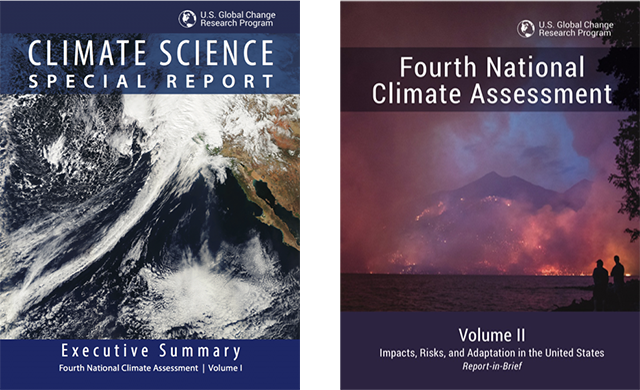
The Fourth National Climate Assessment 2017, Volume 1
Volume 1 of the Fourth National Climate Assessment (2017) is available HERE.
The Fourth National Climate Assessment , Volume 2
Impacts, Risks, and Adaptation in the United States 2018
The 1526-page PDF report is available HERE. Chapter downloads are available HERE. Development of the Fifth National Climate Assessment (NCA5) is currently underway, with anticipated delivery in 2023. This content will be updated as new information becomes available.
_____________________________________________________________
Reports That Shaped Our Lives.
You’ve always heard about the Warren Report. You read it here.
On November 22, 1963 President John F. Kennedy was assassinated. You’ve heard about it, read about it, seen movies about it and talked about it. Here you can read the original 1964 report of the Warren Commission.

1964 The Warren Commission Report on the Assassination of President Kennedy
Officially titled “The President’s Commission on the Assassination of President Kennedy”, the commission is commonly referred to as the Warren Commission after the Chairman of the Commission, U.S. Supreme Court Chief Justice Earl Warren. The report has generated debate and skepticism since its release. Also available in audio (public domain). Public skepticism surrounding the Warren Commission report led to a House Select Committee on Assassinations, which looked at the murders of John F. Kennedy and the Reverend Martin Luther King Junior. The Final Report of the House Select Committe on Assassinations was released in 1979 but did not quell doubts about what happened to either man. On October 23, 2021, Amy Wang reported in the Washington Post “Biden postpones release of JFK assassination files, citing pandemic-related delays.”
Before smoking was banned in most buildings and its sale restricted to adults over 18 years of age, cigarettes were unregulated, widely advertised and even promoted for health benefits. That changed forever with the 1964 report of the Surgeon General on “Smoking and Health”.

Smoking and Health: 1964 Report of the Advisory Committee to the Surgeon General of the Public Health Service
This report on smoking is a meta analysis (a study that bases its findings on other studies) that has had a remarkable effect on public health, more than halving the percentage of smokers in the United States, averting an estimated 8 million deaths according to a 50th anniversary report. Disclaimer: the PDF of the report at the CDC site is a cumbersome series of 20 scanned segments.

The 1967 Kerner Commission Report,
or The National Advisory Commission on Civil Disorders of 1967
Read the Kerner Commission Report for free at the U.S. Department of Justice.
President Lyndon B. Johnson commissioned this report in July 1967 while riots were still underway in Detroit. The report, Chaired by Governor Otto Kerner of Illinois, was issued in 1968 and became a national bestseller. It blamed the riots in Detroit, Los Angeles, Chicago and elsewhere on police brutality, racism, lack of economic opportunity and other causes that resonate today.
A prescient article in Smithsonian Magazine by Alice George (March 1, 2018) stated “The 1968 Kerner Commission Got It Right, But Nobody Listened“. As it turns out, only the names have changed.

The “Marland Report” on Gifted Education (Committee Summary)
Dr. Sidney P. Marland, Jr. issued the report titled “Education of the Gifted and Talented: Report to Congress,” (5-page committee summary) which was the first national report on gifted education and contained the first widely used definition of giftedness in children. The report concluded that few of the nation’s approximately 2 million gifted children received appropriate educational services. The report helped pave the way for gifted education programs in the United States. See the ERIC summary of the report HERE. Download the PDF of the full 127-page Marland report HERE. A 2016 article “After the Marland Report: Four Decades of Progress?” published in the Journal for the Education of the
Gifted states that studies during the intervening 44 years since the release of the report have “reiterated the neglect given to the nation’s most able students…” The National Association for Gifted Children has a prepared a list of key reports on gifted education that can be downloaded HERE.

The Pentagon Papers
The Pentagon Papers: Report of the Office of the Secretary of Defense Vietnam Task Force
The Pentagon Papers are the Report of the Office of the Secretary of Defense Vietnam Task Force. This report was commissioned by Secretary of Defense Robert McNamara in 1967. Portions of the report were leaked to The New York Times by Daniel Ellsberg in June of 1971. The complete report was released by the National Archives on the 40th anniversary of the leak to the press. Many of these files are now available in PDF form HERE. The files are large, and it is best to visit the archive link online and download the files from there. In June 2021, The New York Times released a series of articles on the 50th anniversary of the publication of the Pentagon papers. Elizabeth Becker’s June 9, 2021 article “The Secrets and Lies of the Vietnam War, Exposed in One Epic Document” summarizes the impact of the document on the American consciousness. Becker writes “The revelations in the Pentagon Papers infuriated a country sick of the war…” This was the first big public leak of sensitive documents and the Times decision to publish was very controversial.
![Out of Left Field: George W. Bush, Steroids, and the 2004 State of the Union Address [Going Public Case Study #1] — 22ZIN](https://images.squarespace-cdn.com/content/v1/62a65724b5879462f6e0a5a8/cb110286-dee5-4cae-a6b0-8f1dea11e135/MAC+and+Sosa.png)
The Mitchell Report on Steroids in Baseball
The Report to the Commissioner of Baseball of an Independent Investigation into the Illegal Use of Steroids and Other Performance Enhancing Substances by Players in Major League Baseball, informally known as the Mitchell Report, was released on December 13, 2007. The 409-page report named 89 Major League Baseball players alleged to have used steroids and other performance-enhancing drugs. On page 160 of the report, Victor Conte, the president of BALCO (the Bay Area Laboratory Cooperative in Burlingame, California) is cited as telling federal agents “that he had sold “the cream” and “the clear,” and advised on their use, to dozens of elite athletes, including several players in Major League Baseball whom he named in the interview: Barry Bonds; Jason Giambi; Jeremy Giambi; Armando Rios; and Gary Sheffield.” Among the players named in the Mitchell Report in addition to Barry Bonds and Jason Giambi were Roger Clemens, David Justice, Jose Canseco, and many other prominent players. The reputations of Mark Mcquire and Sammy Sosa, Sports Illustrated Sportsmen of the Year in 1999 (left), would never recover. As of 2024, no known steroid user has been voted into the baseball hall of fame.

NCAA External Gender Equity Review
The NCAA External Gender Equity Review shows disparities between men’s and women’s athletic programs. This Phase I report covers the Basketball Championships.
The NCAA commissioned a gender equity review of its women’s and men’s basketball programs after Oregon women’s basketball player Sedona Prince posted a tictoc video showing a comparison of weight rooms between the men’s and women’s programs at the 2021 NCAA basketball tournament. As you can see, the women had a single barbell rack and the men had a full gym full of equipment. See Amelia Nierenberg’s March 16, 2022 New York Times article “The Video That Changed the N.C.A.A.”
Church Committee Report 1975
The Church Committee Report (final report published in April 1976 in six books) was a U.S. Senate Report on CIA intelligence activities, including alleged attempts to assassinate Patrice Lumumba of Zaire and other foreign leaders. Named after U.S. Senator Frank Church (D. Idaho), the reports focused on U.S. intelligence agencies. The reports can be found at: U.S. Senate: Senate Select Committee to Study Governmental Operations with Respect to Intelligence Activities
Coming Soon!
The Flexner Report by the Carnegie Foundation. Abraham Flexner study on the condition of medical education in the United States. This led to accreditation and the end of homeopathic medical schools in the U.S. Before the report there were 22 schools, thirty years later (1940) they had all closed. (The Law of Similars by Chirs Bohjalian, page 197.)
State Reports

Improved Management of Mobile Devices and Services Could Save North Carolina at Least $1-2 Million Annually
This February, 2021 report of the Program Evaluation Division (PED) of the North Carolina General Assembly found shortcomings related to “the procurement and management of mobile devices and services including more than 3,000 devices with zero or little usage that incur monthly service charges.” As the state spent an estimated $20.3 million on mobile devices and services in FY 2020, recommended management improvements could result in an estimated $1-2 million in savings annually. The website of the Program Evaluation Division has been taken down as staff of the well-regarded PED were laid off earlier this year, a surprise move, given that the well-respected office generally documented a return on investment of almost $20 for every dollar that it spent. The full report, which is an excellent “nuts and bolts evaluation,” is still available in PDF form HERE. NOTE: From the PED website. “The PED was in operation for 13.5 years until February 26, 2021, when legislative leadership dissolved the Division in favor of giving members more involvement in the oversight process.” In other words, the Republican legislature killed its oversight division. RKJ.
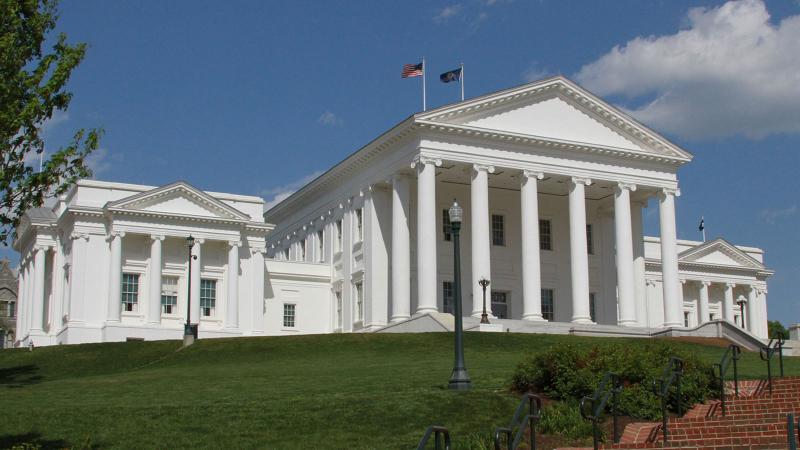
Virginia Compared to Other States, 2021
This report of the Virginia Joint Legislative Audit and Review Commission (JLARC) compares Virginia with other states on 36 variables ranging from population (Virginia ranks 12th) to bond ratings (Virginia ranks 1st). This is a descriptive report, most of JLARC’s work consists of program evaluations. For more about JLARC and its award-winning work, see http://jlarc.virginia.gov .

JLARC Review of Virginia’s System of Capital Punishment, 2002
Virginia became the first state in the South to abolish capital punishment in 2021. As reported by Hailey Fuchs in the New York Times, “Where there were once dozens of prisoners on the state’s death row, now there will be none.” Almost 20 years earlier, Virginia’s Joint Legislative Audit and Review Commission reported that “the most
important factor influencing the decision of prosecutors to seek the death penalty in capital murder cases is the jurisdiction in which the murder occurred rather than the circumstances of the crime.” This finding and others cast doubt on the fairness of capital punishment in Virginia. The report, written by Wayne M. Turnage, is a monument to analytical rigor and is often cited as one of the finest reports ever produced by JLARC. The report can be accessed in PDF form HERE.

Improving Virginia’s Foster Care System
This 2018 report of the Virginia Joint Legislative Audit and Review Commission (JLARC) found that “In most cases, the basic steps required by federal and state laws to ensure the safety of children in foster care are being followed in Virginia, and most children are receiving required physical and mental health services. However, a lack of adherence to federal and state requirements for ensuring children’s health and safety, even if they are infrequent, creates avoidable risks for children in the government’s custody.” This report received an impact award in 2019 from the National Conference of State Legislatures.
K–12 CLASS SIZE REDUCTIONS AND STUDENT OUTCOMES IN WASHINGTON STATE, 2013:
A REVIEW OF THE EVIDENCE AND BENEFIT–COST ANALYSIS
Washington State Institute for Public Policy, Authors: Steve Aos and Annie Pennucci.
This January 2013 benefit-cost analysis demonstrated average benefits of $2,302 per kindergarten student as a result of reducing class size by one student per class in Washington state. The cost per student is $198 per student in grades K-3. Benefits reduce to $1,218 in Grade 1; $725 in Grade 2 and down to $353 in Grade 12. This is as good an example of cost benefit analysis as I have ever seen. WSIPP’s benefit cost approach is very robust and was used as the methodological basis for the Pew Charitable Trust’s Results First Initiative. See the Washington State Institute for Public Policy for other excellent examples of benefit-cost analysis.
Best Practices for Local Recycling Programs in Wisconsin
The State of Wisconsin’s Legislative Audit Bureau, November 2020. This report finds that “Attaching warning tags to recycling containers with inappropriate materials can be effective at reducing the amount of such materials placed in the containers, especially if additional follow-up is conducted with the individuals who receive the tags.”

A Review of Restorative Justice in Florida and Other States
Report by the Office of Program Policy Analysis and Government Accountability (OPPAGA), which is a research arm of the Florida Legislature. The report states that “Restorative justice is a victim-centered process that typically includes repairing harm from a crime, holding offenders accountable, and stakeholder participation. In the criminal
justice field, the literature supports positive impacts on victims after participation in restorative justice programming.” This meta analysis would be a good starting point for someone interested in the topic. The report can be requested in hard copy form from OPPAGA@oppaga.fl.gov.
REPORT OF INVESTIGATION INTO ALLEGATIONS OF SEXUAL HARASSMENT BY GOVERNOR ANDREW M. CUOMO
ISSUED BY THE STATE OF NEW YORK OFFICE OF THE ATTORNEY GENERAL LETITIA JAMES
This August 3, 2021 states that “We, the investigators appointed to conduct an investigation into allegations of sexual harassment by Governor Andrew M. Cuomo, conclude that the Governor engaged in conduct constituting sexual harassment under federal and New York State law. Specifically, we find that the Governor sexually harassed a number of current and former New York State employees by, among other things, engaging in unwelcome and nonconsensual touching, as well as making numerous offensive comments of a suggestive and sexual nature that created a hostile work environment for women.” Read the entire 168 page report HERE.
One week after the release of the report, the Washington Post reports that “Cuomo announces resignation in effort to head off likely impeachment after devastating report on his conduct“. Read the full text of Andrew Cuomo’s August 10, 2020 RESIGNATION SPEECH HERE. In the New York Times article “The Quislings of Albany” Maureen Down writes that ““Pamela; or Virtue Rewarded” by Samuel Richardson is an 18th-century British novel about a powerful man who makes life a horror for a pretty young maidservant by constantly harassing and assaulting her.” Dowd writes that Cuomo’s assistants played a role similar to the Mrs. Jewkes character in the novel.
Podcast Reports of the Louisiana Legislative Auditor
The Louisiana Legislative Auditor features highlights from selected reports in Podcast form. Among the reports currently on the site are a December 2020 report, “Integrity of Data on the COVID-19 Dashboard”, and a November 2020 report, “Medicaid Non-Emergency Medical Transportation Program”. The Louisiana Legislative Auditor was the 2019 winner of the Excellence in Evaluation Award given by the the National Legislative Program Evaluation Society of the National Conference of State Legislatures
Why Reports, Studies and Research Papers?
Why would a reading website have a section on studies and research and reports? Well, most of us hear about important studies and reports, but you have to read it here. The Warren Commission Report on the assassination of President John F. Kennedy has been debated exhaustively since its publication in 1964. A Google search yields over 51 million results. But few have read the actual report. I expect the same is true of the landmark 1964 Surgeon General’s report on smoking, which bent the curve on attitudes towards smoking in the U.S. Almost every week, a study comes out on an important topic. Public reports and studies are in the public domain. Academic research studies and reports are sometimes in the public domain and single copy downloads of academic research are generally inexpensive. For more information on free research sites, visit our Reading Resources section.
__________________________________________________________________________________________________________________________
Classic Reports, Studies and Papers of Significance

The 9/11 Commission Report , Final Report of the National Commission on Terrorist Attacks Upon the United States
On September 11, 2001 terrorists attacked the World Trade Center in New York City and other targets. This is the official government report on those attacks. The link above takes the reader to the table of contents for the executive summary and all other report elements. To go to a PDF of the complete 585 page report, click HERE.
On the twentieth anniversary of the September 11, 2001 attacks, President Biden declassified a 16-page FBI document related to contact by the Saudi government with the hijackers. The redacted document can be downloaded HERE. According to a September 12, 2021 article in The Guardian, “The document describes contacts the hijackers had with Saudi associates in the US but offers no evidence the Saudi government was complicit in the plot.”

The Report to the President by the Presidential Commission on the Space Shuttle Challenger Accident (The Rogers Commission)
Download and read the Rogers Commission Report for free.
The explosion of the Challenger Space Shuttle on January 28, 1986 shook the U.S. space program to its core. The specific cause of the explosion was the failure of an O-ring in the right solid rocket booster. Diane Vaughan in her book “The Challenger Launch Decision” attributes the failure to NASA’s culture which permitted the launch because launch conditions could not be proven to be unsafe. Another classic book along similar lines is Charles Perrow’s “Normal Accidents: Living with High Risk Technologies”. For an example of a “normal accident” see William Langewiesche’s March 1998 article in the Atlantic Monthly, “The Lessons of ValueJet 592”. Langewiesche also wrote “Columbia’s Last Flight” for the November, 2003 issue of the Atlantic Magazine. This article recounts another normal accident, the February 1, 2003 catastrophe which destroyed the Columbia Space Shuttle and its crew. The Report of the NASA Columbia Accident Investigation Board is available to read HERE.

Relativity: The Special and General Theory by Albert Einstein
Read “Relativity: The Special and General Theory” by Albert Einstein for free on Project Gutenberg.
This non-fiction work isn’t exactly a report and it isn’t exactly a study. It is a general theory that was titled “A Popular Exposition” that explained – in the author’s words – “the theory of Relativity to those readers who, from a general scientific and philosophical point of view, are interested in the theory, but who are not conversant with the mathematical apparatus of theoretical physics.”
Einstein was awarded the Nobel Prize in Physics in 1921 “for his services to Theoretical Physics, and especially for his discovery of the law of the photoelectric effect.” A translation of Einstein’s 1905 paper on the photoelectric effect can be accessed HERE.
The paper on the photoelectric effect was the first of four papers published in Einstein’s “miracle year” of 1905. The second paper dealt with Brownian motion; the third explained Einstein’s theory of special relativity ,and the fourth developed mass-energy equivalence (E=mc2). It was a good year.
The Silent Spring by Rachel Carson
NOTE: “The Silent Spring” and other books by Rachel Carson are not in the pubic domain. Her lyrical book, “The Silent Spring” is not a report but it is a study of nature. I have included it because it is available to readers for free through its serializations in The New Yorker, first in 1962 and then reprinted in 2017. The problems that Carson identified with DDT continue to plague mankind today. On On April 26, 2021 Rosanna Xia of the Los Angeles Times reported that “Stunning DDT dump site off L.A. coast much bigger than scientists expected“.
It has been said that “The Silent Spring” launched the environmental movement and perhaps it did. I have included “The Silent Spring” as a report because of its content and the manner in which it is serialized but I am already unhappy with my choice. For those of you unfamiliar with this groundbreaking book, I invite you to read an excerpt from the book with an introduction by Linda Lear and an afterword by Edward O. Wilson. Rachel Carson is a fascinating and courageous person, who also wrote “The Sea Around Us” and “The Edge of the Sea“. Again, these books are not in the public domain.

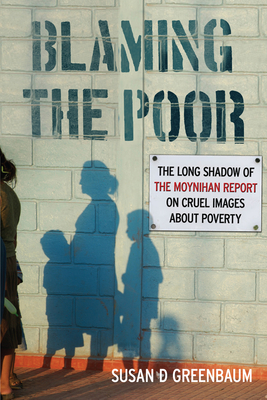
The Moynihan Report: The Negro Family, The Case for National Action
One of the more controversial and influential reports of the mid-twentieth century was the Moynihan report. Read the original report HERE. The report has been widely criticized and discredited, principally for “blaming the poor”. Its influence on public policy has been such, however, that in 2015, The Atlantic magazine published The Moynihan Report: An Annotated Edition on the 50th anniversary of the report. Good general background on the Moynihan report is provided in Wikipedia. In June, 2013 The Urban Institute Released a report titled The Moynihan Report Revisited. Sadly, Gregory Acs and his co-authors conclude “Over the past five decades, the statistics that so alarmed Moynihan in the 1960s have only grown worse, not only for blacks, but for whites and Hispanics as well.”
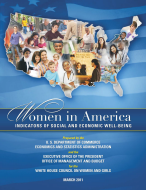
Women in America: Indicators of Social and Economic Well-Being
In 2011, President Barack Obama released the report Women in America. The report featured a broad range of data giving a snapshot of American women and was a follow-up of sorts to the 1963 Presidential Report on American Women headed by Eleanor Roosevelt. The 2011 report noted that women had equaled men in educational achievement but still trailed them in pay, earning approximately 75% as much as their male counterparts.
A digitized copy of the 1963 Presidential Report on American Women has been made by the Hathi Trust Digital Library. I found this report in an article “GBH and the President’s Commission on the Status of Women” by Maureen Mann Tannetta and recommend the article for an understanding of the 1963 report and the roles played by Eleanor Roosevelt and John F. Kennedy. GBH is the Boston Public Radio Station. In 1997, Virginia JLARC did a study on “Gender Pay Equity in the Virginia State Workforce.” The report found that women in State jobs earned 84% of what men earned in comparable state jobs. The analysis for the report was performed by the late Dr. Gregory J. Rest, JLARC’s Chief Methodologist. Greg was instrumental in many of JLARC’s most methodologically rigorous studies and helped design Virginia’s revenue stabilization fund.
The Report of the President’s Committee on Administrative Management (The Brownlow Committee Report, 1937)
The Brownlow Committee Report (so named for its Chair, Louis Brownlow) recommended sweeping modernization of the Executive Branch of government during the administration of President Franklin D. Roosevelt. The implementation of the report’s recommendations resulted in the creation of the Executive Office of the President and other changes. Further, the passage of the Reorganization Act of 1939 gave the President the authority to create numerous wartime agencies which facilitated the effective management of WWII.
A summary is available here. For a complete copy of the report, readers must establish an account.
___________________________________________________________________________________________________________________________
CURATIONS OF REPORTS

Wikipedia Curation of U.S. Government Reports
For a general list of government reports, see Wikipedia’s Category: Reports of the United States Government. As of this writing (February 16, 2022), the site lists 103 reports. Some of these are regularly recurring reports, such as the Census Bureau’s Monthly “Factory Report”, technically the Monthly Full Report on Manufactures’ Shipments, Inventories, and Orders. Others are periodic reports such as the quadrennial National Climate Assessment (see Volume 1 of the 2017 Report.) Others are one-time reports, such as Kerner Commission Report, found HERE in document form on YRIH.
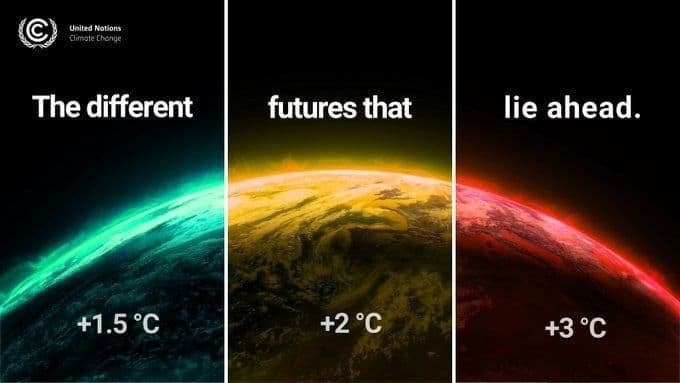
United Nations Climate Reports
The United Nations has a website dedicated to key reports on climate impacts and solutions.
This site features reports by the Intergovernmental Panel on Climate Change (IPCC) and the World Meteorological Organization (WMO). The Intergovernmental Panel on Climate Change (IPCC) is the UN body for assessing the science related to climate change. The World Meteorological Organization promotes better understanding of climate and the weather. World meteorological day 2022 is March 24.

The Library of Congress
The Library of Congress does not have a “curated” collection of government reports perse but if you go to the site and search “reports” you will find that there are 882,528 reports in the collection as of February 18, 2022. The trick will be querying the one that you are looking for. Searching for items is daunting. I tried numerous times to find documents that I am sure are in the library’s collections, sometimes finding them after exhaustive search and sometimes not finding them. I suggest that you try, but also consider — after giving it the old college try — using the ask a librarian feature. Librarians won’t do your work for you, but they will help. (BTW, local library websites have “ask a librarian” as well, and they are likely not as busy.)
The image to the left is the main reading room at the Library of Congress.

Rutgers Libraries 50 Popular Government Websites
While this is not a compendium of reports perse, the world is not paper anymore, either. Rutgers University Libraries 50 Popular Government Websites is a good launch pad to steer you to popular government sites, including others listed here. Included on the site are the Catalog of U.S. Government Publications, the Census Bureau, the CIA Library, the National Center for Education Statistics, QuickFacts, and the Smithsonian Institute.

The Catalog of U.S. Government Publications
The Catalog of U.S. Government Publications is an online directory for print, electronic and microfiche publications of the legislative, executive, and judicial branches of the federal government. Where links to online copies of the documents exists, those links are normally provided. While this is a very robust site, it depends a lot on your ability to search for titles. If you want to browse titles, you can go to New Titles in the menu bar and usually there are a couple of hundred new titles that you can look at.
———————————————————————————————————————————————————————————————————–
Reports You Can Use
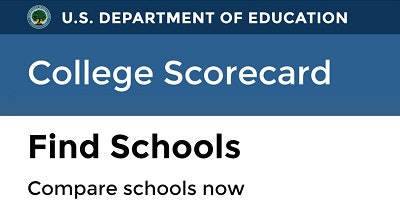
The College Scorecard
The U.S. Department of Education’s College Scorecard provides comparative information on college costs, student completion, debt, earnings of graduates and more. The data need to be carefully considered, however. For example, the “average annual cost” for the University of Richmond
is given as $26,000 per year, which takes into account one receiving substantial financial aid. The average annual cost for UR is $72,450 (Source: DOE IPEDS). Of most value at this site is the comparative earnings data, which shows median earnings ten years after attendance to be $69,310 compared to the $47,976 midpoint for other four-year schools.
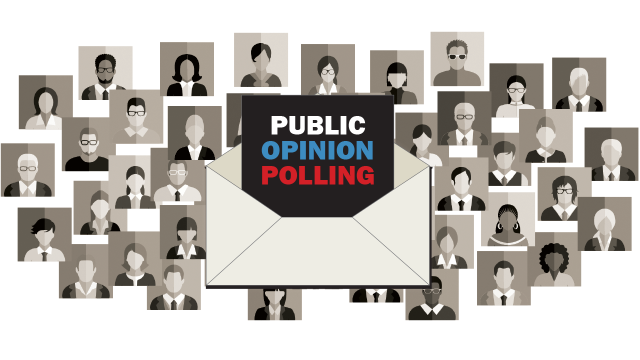
Want to Better Understand the Data in the Reports on You Read it Here? The Pew Research Center has a free course for you.
Sign up for Pew’s free email mini-course Pew Polling mini course.
As a public service, the Pew Research Center offers a five lesson mini-course on polling. The course covers why we have polls, the different kinds of polls, how polls work, and why polling is getting harder. The course is taught by Dr. Scott Keeter, a senior survey advisor at the Pew Research Center and an expert on public opinion and political behavior. I’ve met Scott during his work at VCU and Pew and he is one of the very best at polling and public policy research. The Pew Research Center is a topflight non-partisan “fact tank” that generates data on a broad range of public policy issues.
Sport and crime prevention: Individuality and transferability in research
This article from the December 1, 2013 issue of the Journal of Sport for Development by David Ekholm explores literature examining sport practices as a means of crime prevention. The abstract of the article states that “Through a content analysis, the article aims to develop categories and provide an analytical discussion of the findings. The descriptive analysis reveals that, although researchers are most notably critical of putting faith in sport for social objectives, there is research that affirms the role of sport in crime prevention.”
“Discoveries Made in Exploring the Missouri, Red River and Washita, by Captains Lewis and Clark, Doctor Sibley, and Mr. Dunbar; with a Statistical Account of the Countries Adjacent.” (IN PROGRESS)
I am looking for a digitized copy of the “Discoveries Made in Exploring the Missouri, Red River and Washita, by Captains Lewis and Clark, Doctor Sibley, and Mr. Dunbar; with a Statistical Account of the Countries Adjacent.” This is the report sent by Jefferson to the Congress concerning the Lewis and Clark Expedition. “The Journals of Lewis and Clark, 1804-1806 by William Clark and Meriwether Lewis” are available on Project Gutenberg.
You’ve heard about these reports, but you read it here.









